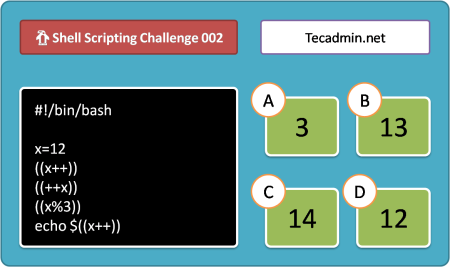Concatenating strings in Bash is as simple as combining them with the double-quote (“ ”) character. However, if your strings consist of more than a couple of words or include special characters, you may need to use a different method. Fortunately, the Bash programming language provides several methods for concatenating strings.
This article explores five common ways to combine strings in your Bash scripts and programs. Keep reading to learn more about concatenating strings in Bash and which method is best for your specific situation.
Concatenate Strings
The simplest way to combine strings in Bash is to use the double-quote (“ ”) character. You can enclose your strings within double quotes and combine them to form a single string. This is useful for combining short strings that don’t require any special formatting. The example below demonstrates how to combine two short strings to form a single, long string using double quotes.
1 2 3 4 5 6 7 8 9 10 11 12 13 14 | #/usr/bin/env bash # A Sample shell script to concatenate strings # Declare variables STR1="Welcome" STR2="Tecadmin" # Concatenate both strings STR3="$STR1$STR2" echo "$STR3" # You can even add a space between strings STR3="$STR1 $STR2" echo "$STR3" |
The echo command will print the result string.
OutputWelcomeTecadmin Welcome Tecadmin
Concatenate String Variable with Literal
A literal represents a fixed value. Instead of joining two string variables, we can also join a literal string with a variable value. For example, take an input of a user’s first name and prefix it with a “Welcome” literal string.
1 2 3 4 5 6 7 8 9 10 11 | #/usr/bin/env bash # A shell script to concatenate variable # with a literal string # Take a user input and store to variable read -p "What is your first name: " STR1 # Concatenate the string STR2="Welcome ${STR1}" echo "$STR2" |
Execute the above script, It will prompt you to enter your Name. Then concatenate “Welcome” as a prefix to the input string and print the results.
OutputEnter your first name: Rahul Welcome Rahul
Concatenate Strings with += Operator
In general programming language the += adds the RHS value to LHS. You can also use this method to Concatenate the RHS string variable to the LHS string.
1 2 3 4 5 6 7 8 9 10 11 | #/usr/bin/env bash # A Sample shell script to concatenate strings # Delcare variable STR="Welcome to" # Concatenate another string to this variable. STR+=" TecAdmin" # Display the result string echo $STR |
This will print: Welcome to TecAdmin
Using the Printf Command
In bash, print is a command that is used to format and print data to standard output. The -v option initialize a variable with the output rather than print on output.
1 2 3 4 5 6 7 8 9 10 11 12 13 | #/usr/bin/env bash # A Sample shell script to concatenate strings # with the print command. # Delcare variable PREFIX="Hello Mr. " # Concatenate another string to this variable. printf -v STR "$PREFIX Rahul" # Display the result string echo $STR |
This will print: Hello Mr. Rahul
Using loop
When there is an undefined number of the input strings, you need to concatenate them into a single string. The while loop will help you with the join (+=) operator.
For example, you need to read all lines of a file and concatenate them in a single string. To do this, we will read the file content line by line and concatenate them.
1 2 3 4 5 6 7 8 9 10 11 12 | #/usr/bin/env bash # A Sample shell script to concatenate strings # with a while loop # Delcare variable while read LINE; do STR+="$LINE " done < data.txt # Display the result string echo $STR |
Conclusion
This article explores five common ways to combine strings in your Bash scripts and programs. The simplest way to combine strings is to use the double-quote character. You can also use the for loop command to iterate through a series of words and combine them into a single string. The join (+) command is a Bash built-in that can be used to combine a series of items into a single string. The BASH scripting language allows you to perform more complex string operations including combining variables, calculations, and more.

